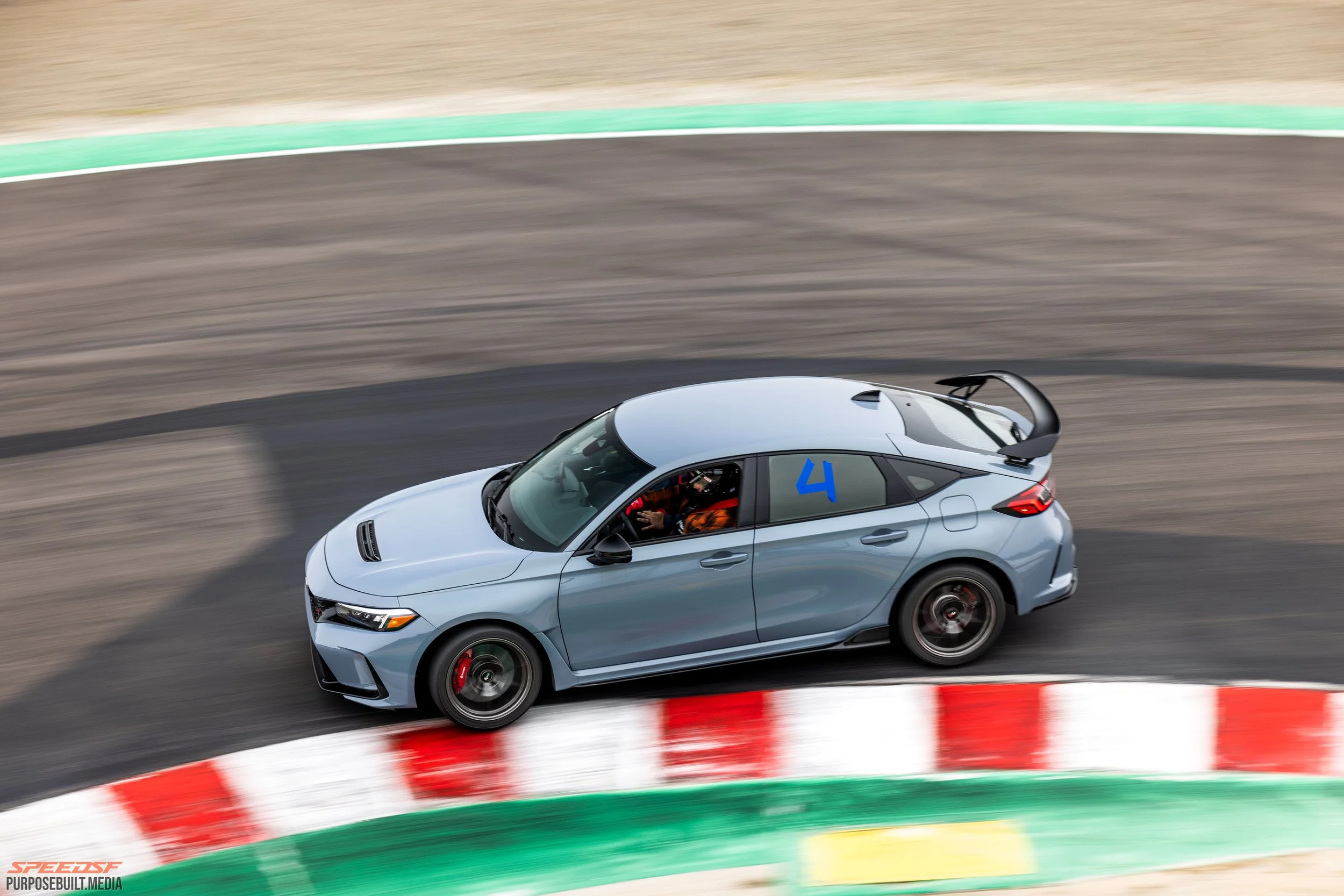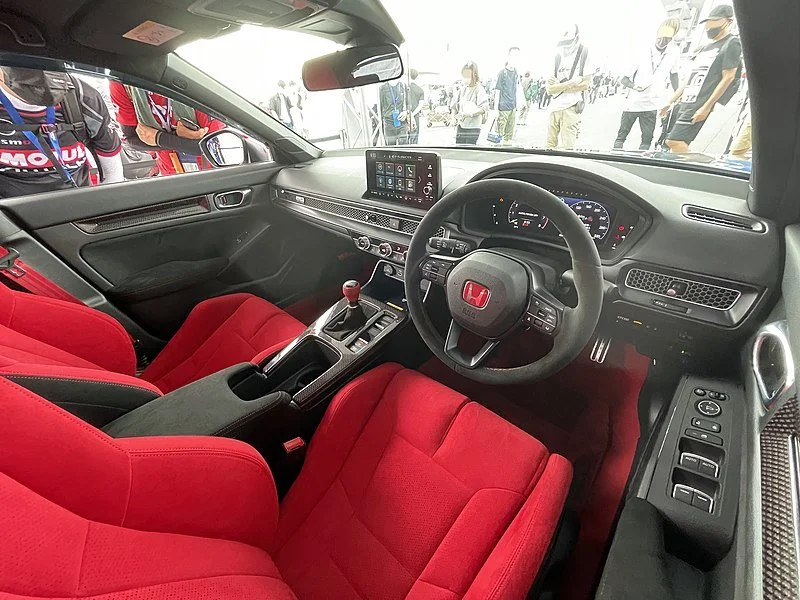Alex’s FL5 Type R: Best of Both Worlds
For Alex Peysakhovich, living in NYC had its perks, but easy access to track days was not one of them. When he relocated to Los Altos and found himself with a backyard and a garage, he decided it might be time to purchase that car he’d always wanted and take advantage of California’s temperate weather and multiple tracks within a few hours’ driving distance.
His heart was always with Honda, but the then-current FK8 Type R was too boy-racer for his liking. “I really loved the car, but thought about some things you have to do with your only car, like go to a business meeting or drive in a funeral procession, and I couldn’t really imagine doing those in an FK8.”
So instead he began tracking with an ND Miata. Heavy modification made it a capable cornering machine, but its impracticality became a constant pain; it needed a trailer for long drives and couldn’t be used to take his dog and his girlfriend on weekend trips. He thought about getting an electric daily that he wouldn't track or modify, but that idea didn't last long. “What’s the point of buying a car you’re never going to take to the race track?” he asked himself.
Enter the FL5 Civic Type R, which debuted after a couple years of tracking the Mazda. The new Civic traded its predecessor’s divisive looks for more subdued styling, so Alex had to check it out for himself.
“I used to think Type Rs were a little overhyped, but after seeing it in person, I recognized why the car has a cult following,” he said.
He appreciated the way Honda’s engineers made this fifty-grand Civic feel unmistakably upmarket. But more than presence or build quality, it had real-world usability going for it. On longer trips, the comfortable seats were a welcome upgrade from his Miata’s race buckets. The interior space, the fit and finish, and the performance made the FL5 a great candidate for a daily driver-come-sleeper, and once the premiums started to shrink, Alex pulled the trigger and brought one home.
Before his first track outing, he made a few adjustments. He’d learned enough to know that a ~3,200 pound front-driver would wreck its Pilot Sports fairly fast, so he ditched those for a set of 265-section Bridgestone Potenza RE-71RS tires wrapped around Apex VS5-RS wheels. Along with a set of eccentric lower ball joints to increase negative camber at the front axle, he replaced the stock pads with a set of Ferodo DS3.12s to help clamp the factory two-piece rotors.
He broke it in over 600 miles then took it to Thunderhill West for its shakedown, where he was pleasantly surprised. The steering was quick, despite a dead spot at twelve o’clock, and the gearbox was, well, Honda. If the interfaces were lacking in any way, it was the position of the throttle — as he put it, “in another zip code.” Thankfully, the auto-blip function facilitated heel-toe shifts despite the awkward pedal placement.
Being a front-drive car, he had expectations for how it might handle on a damp morning. Those were dashed on his first fast lap after mounting the dorito at Turn 3, when it hung the rear out in a big way.
“As far as a car that can pack a weekend of camping gear and do great times around Laguna, it’s a hard car to beat.”
The FL5’s mechanical LSD and brake-based stability control system do a commendable job getting the middleweight to rotate. What was less than impressive were the thermal problems which have been associated with the turbocharged Type Rs. Though not catastrophic, the heat causes the motor to pull timing by the end of a long session, but never puts it into limp mode. “I think there’s only so much you can expect from a turbocharged two-liter making over 300 horsepower,” Alex added.
Fortunately, these issues are not new to the Type R lineup and the FL5 was designed to make them easier to address than its predecessor ever allowed. The ducting routes have been established from the factory, along with a functional hood vent. Honda laid the groundwork, but more needs to be done for hot summer days. “It isn’t imperative, but it could use a bigger radiator and an oil cooler. I’ve got those sitting in my garage in anticipation for the summer.”
“The designers cared about the experience of the car; they wanted it to feel special, even when parked.” Alex added. Credit: Tokumeigakarinoaoshima CCA-SA 4.0.
Beyond that, any remaining mods are far from necessary. The FL5 is well-balanced out of the box and does not need much more power. “The engine is certainly strong. If it could use something to make it feel a little sportier, it would be an exhaust — it’s too quiet.”
That subdued exhaust note is part of what makes the car so versatile, and its wide repertoire comes at a premium. Besides requiring pricier fuel, the turbocharged front-driver is hard on its front brakes and tires, and it goes through consumables far faster than a lighter, better balanced car like a Miata.
There’s no denying the running costs are too high to track a Type R regularly — multiple track days per month will continue to be the Miata’s job — but the Civic will be doing daily driving, mountains, longer trips, and rear its head at Laguna and Thunderhill East a few times a year.
Four years ago, Alex thought fifty thousand for a Civic was steep, but he’s changed his tune as of late. “I know that sort of money for a Civic sounds crazy, but you really need to try it. It’s tough to think of something similarly priced that handles so many different tasks as well as the Type R. If I could only have one car, this would be it.”





